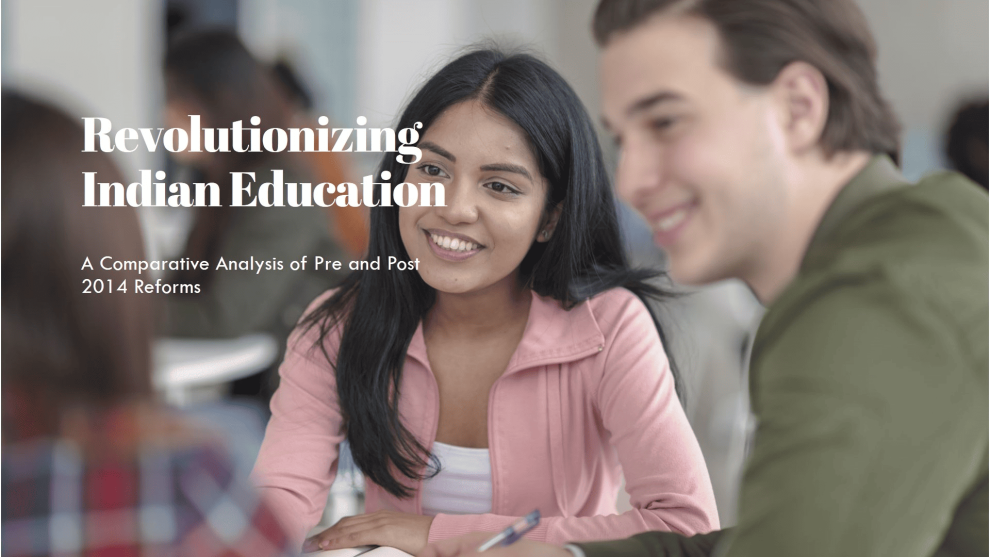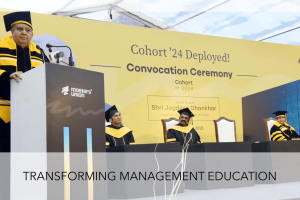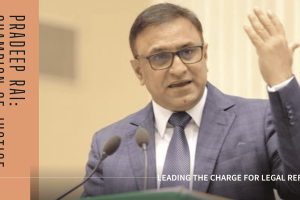Introduction
The India’s education system has undergone significant transformation over the past few decades. The period before 2014 was characterized by a series of challenges, including limited access to quality education, high dropout rates, outdated curricula, and inadequate infrastructure. Despite numerous policies and initiatives aimed at improving the educational landscape, the system struggled to meet the growing demands of a rapidly developing nation. The primary focus was on expanding access to education, particularly in rural areas, and addressing issues such as teacher shortages and lack of resources. The year 2014 marked a pivotal point in the history of Indian education with the introduction of new reforms and policies under the leadership of the government that came into power. These reforms aimed to address the shortcomings of the previous era and introduce innovative changes to elevate the quality of education across the country. Key initiatives included the implementation of digital learning platforms, modernization of the curriculum, emphasis on skill development, and efforts to improve teacher training and accountability.
One of the most notable changes post-2014 was the introduction of the New Education Policy (NEP) 2020, which envisioned a holistic and multidisciplinary approach to education. The NEP 2020 emphasized the importance of critical thinking, creativity, and experiential learning, moving away from rote memorization. Additionally, it aimed to make education more inclusive by ensuring equal opportunities for all sections of society, including marginalized and disadvantaged groups. This comparative analysis seeks to explore the key differences and transformative changes in the Indian education system before and after 2014. By examining various aspects such as policy frameworks, technological advancements, curriculum development, and teacher training, we aim to provide a comprehensive overview of how these reforms have impacted the quality and accessibility of education in India. The journey from pre-2014 challenges to post-2014 innovations highlights the strides India has made towards building a more robust and equitable education system for future generations.
Historical Context: Pre-2014 Education System
Before 2014, the Indian education system faced numerous challenges that hindered its progress and effectiveness. The education landscape was marked by significant disparities in access and quality, particularly between urban and rural areas. Limited access to quality education was a pervasive issue, with many rural regions lacking adequate schools, trained teachers, and educational resources. The infrastructure in many schools was insufficient, often lacking basic amenities such as clean drinking water, proper sanitation, and functional classrooms. High dropout rates, especially at the secondary school level, were a major concern. Socio-economic factors, child labor, and cultural attitudes towards education contributed to students leaving school prematurely. The curriculum was often criticized for being outdated and overly focused on rote memorization rather than critical thinking and problem-solving skills. This approach did not equip students with the necessary skills to thrive in a rapidly changing global economy.
Teacher shortages and the lack of proper training were also significant issues. Many schools, particularly in rural areas, struggled to recruit and retain qualified teachers. The existing teacher training programs were often inadequate, failing to prepare educators for the diverse needs of their students. As a result, the quality of education suffered, and learning outcomes were suboptimal.
Despite these challenges, several initiatives were implemented to improve the education system. Programs such as the Sarva Shiksha Abhiyan (SSA) aimed to achieve universal primary education by improving school infrastructure, providing free textbooks and uniforms, and increasing enrollment rates. The Mid-Day Meal Scheme was introduced to address malnutrition and incentivize school attendance. Additionally, the Rashtriya Madhyamik Shiksha Abhiyan (RMSA) focused on enhancing secondary education by upgrading school facilities and encouraging vocational education. While these initiatives made some progress, the overall impact was limited by systemic issues and implementation gaps. The need for comprehensive reforms and innovative approaches became increasingly apparent, setting the stage for the transformative changes introduced post-2014.
The Need for Reform
The Indian education system, prior to 2014, faced a multitude of entrenched issues that necessitated comprehensive reform. The urgent need for change was driven by several critical factors, ranging from socio-economic disparities to the evolving demands of a globalized world.
Socio-Economic Disparities: One of the most pressing issues was the stark disparity in educational access and quality between urban and rural areas. Rural schools often lacked basic infrastructure, qualified teachers, and educational resources, which significantly hindered the learning outcomes of students. This urban-rural divide perpetuated cycles of poverty and limited socio-economic mobility for a large segment of the population.
High Dropout Rates: High dropout rates, particularly at the secondary level, underscored the system’s inability to retain students. Socio-economic pressures, child labor, and cultural factors played a significant role in students leaving school prematurely. This not only deprived them of essential education but also restricted their future employment prospects and overall quality of life.
Outdated Curriculum: The curriculum, heavily focused on rote memorization, failed to develop critical thinking, creativity, and problem-solving skills. This traditional approach did not prepare students for the complexities of a modern, technology-driven economy. The lack of emphasis on skill development and practical knowledge further alienated students from real-world applications of their education.
Teacher Shortages and Quality: Chronic teacher shortages and inadequate teacher training were major hurdles. Many schools, especially in rural areas, struggled to attract and retain qualified educators. The existing teacher training programs were insufficient, leading to subpar teaching quality and poor student performance.
Implementation Gaps: Despite numerous initiatives such as Sarva Shiksha Abhiyan (SSA) and the Mid-Day Meal Scheme, implementation gaps severely limited their effectiveness. Issues such as corruption, mismanagement, and lack of accountability impeded the successful execution of these programs.
Global Competitiveness: With the advent of globalization, there was an increasing need for an education system that could produce globally competitive graduates. The existing system was ill-equipped to meet the demands of a rapidly changing global economy, emphasizing the need for reforms that would foster innovation, entrepreneurship, and technological proficiency.
The cumulative effect of these challenges underscored the urgent need for a transformative approach to education in India. Comprehensive reforms were essential to address these systemic issues, bridge socio-economic disparities, and equip students with the skills necessary to thrive in the 21st century. This need for reform set the stage for the significant changes introduced post-2014, aimed at revitalizing the Indian education system and ensuring inclusive and equitable quality education for all.
The Dawn of New Reforms: Post-2014 Era
The post-2014 era marked a significant turning point in the Indian education system, driven by the introduction of comprehensive reforms aimed at addressing longstanding challenges and transforming the educational landscape. Under new leadership, the government prioritized education as a cornerstone for national development, implementing a series of initiatives designed to enhance access, quality, and relevance of education across the country.
Digital Learning and Technological Integration: One of the hallmark reforms was the integration of digital learning and technology in education. Initiatives like Digital India and e-Pathshala aimed to bridge the digital divide by providing digital infrastructure, resources, and e-learning platforms such as DIKSHA and SWAYAM. These platforms facilitated remote learning and made educational content accessible to students across different regions, promoting inclusivity.
Curriculum Modernization: The reform period saw a shift towards a more modern, skills-based curriculum. Emphasizing critical thinking, creativity, and problem-solving, the curriculum was revamped to include vocational training and 21st-century skills. This shift was crucial in aligning the education system with the demands of a globalized economy and preparing students for future challenges.
Teacher Training and Professional Development: Recognizing the pivotal role of teachers, significant efforts were made to enhance teacher training and professional development. Programs focused on continuous learning, performance evaluation, and accountability were introduced to improve teaching quality and effectiveness. Enhanced teacher training aimed to equip educators with modern pedagogical skills and knowledge to better engage students.
Infrastructure Development: The government invested in upgrading school infrastructure, particularly in rural and underserved areas. Initiatives aimed at building new schools, upgrading existing facilities, and improving basic amenities such as sanitation and drinking water were prioritized. The implementation of smart classrooms and digital tools further enriched the learning environment.
New Education Policy (NEP) 2020: A landmark reform, the NEP 2020, was introduced to overhaul the education system comprehensively. The policy emphasized holistic, multidisciplinary education with flexibility in subject choices and learning paths. It aimed to make education more inclusive and equitable, focusing on early childhood education, vocational training, and higher education reforms.
The post-2014 reforms represent a concerted effort to address systemic issues and create a more dynamic, inclusive, and forward-looking education system. These initiatives have set the stage for significant improvements in educational outcomes, equipping Indian students with the skills and knowledge necessary to thrive in a rapidly evolving world.
New Education Policy (NEP) 2020: A Landmark Reform
The New Education Policy (NEP) 2020 is a comprehensive framework introduced to revolutionize the Indian education system, addressing longstanding challenges and aligning it with the demands of the 21st century. Marking a significant shift from traditional educational practices, NEP 2020 aims to provide high-quality, inclusive, and equitable education for all, promoting lifelong learning opportunities.
Holistic and Multidisciplinary Education: NEP 2020 emphasizes a holistic approach to education, moving away from rote learning towards fostering critical thinking, creativity, and problem-solving skills. It promotes a multidisciplinary curriculum that allows students to choose subjects based on their interests and aptitudes, breaking down the rigid boundaries between arts, science, and vocational studies. This flexibility aims to nurture well-rounded individuals equipped to adapt to various career paths and life situations.
Early Childhood Care and Education (ECCE): Recognizing the importance of early years in a child’s development, NEP 2020 focuses on universalizing ECCE. It proposes the integration of pre-primary education into the formal schooling system and emphasizes play-based, activity-based, and inquiry-based learning. The policy aims to ensure that every child in the age group of 3-6 years receives quality early childhood education.
Reforms in School Education: The policy introduces a new structure for school education, the 5+3+3+4 system, replacing the previous 10+2 model. This structure corresponds to stages of cognitive development in children and includes five years of foundational education, three years of preparatory education, three years of middle education, and four years of secondary education. It emphasizes foundational literacy and numeracy, experiential learning, and competency-based assessments.
Higher Education Reforms: NEP 2020 aims to transform higher education by fostering greater flexibility and interdisciplinary learning. It proposes the establishment of a Higher Education Commission of India (HECI) to oversee institutions, ensuring transparency and accountability. The policy encourages the integration of vocational education and the introduction of a four-year undergraduate program with multiple entry and exit points, facilitating lifelong learning.
Inclusivity and Equity: The policy focuses on making education more inclusive and equitable by addressing barriers faced by disadvantaged and marginalized groups. It emphasizes gender equality, support for children with disabilities, and measures to reduce dropout rates.
Technology and Digital Learning: NEP 2020 leverages technology to improve access and quality of education. It promotes digital literacy, the use of online resources, and the creation of virtual labs and repositories of learning materials.
NEP 2020 represents a paradigm shift in Indian education, aiming to build a system that is flexible, inclusive, and geared towards the holistic development of individuals, preparing them for the challenges of a rapidly changing world.
Challenges and Areas for Improvement
Despite the transformative vision outlined in the New Education Policy (NEP) 2020, several challenges and areas for improvement persist in the Indian education system.
Implementation Gaps: One of the primary challenges is the effective implementation of NEP 2020 across diverse regions of India. The policy’s success hinges on coordinated efforts between central and state governments, educational institutions, and other stakeholders. Variations in administrative capacities and resource allocation can hinder uniform implementation.
Infrastructure Deficiencies: Many schools, especially in rural and remote areas, continue to struggle with inadequate infrastructure. Basic amenities such as proper classrooms, sanitation facilities, and access to digital tools are lacking. Without addressing these infrastructural gaps, the policy’s goals of inclusivity and quality education cannot be fully realized.
Teacher Training and Quality: The quality of education is directly linked to the competence of teachers. There is an urgent need for extensive and continuous professional development programs for teachers to equip them with modern pedagogical skills and knowledge. Additionally, attracting and retaining qualified educators in rural areas remains a significant challenge.
Digital Divide: While NEP 2020 emphasizes digital learning, the digital divide poses a substantial barrier. Many students lack access to the internet and digital devices, making it difficult to implement e-learning initiatives effectively. Bridging this gap requires substantial investment in digital infrastructure and ensuring affordable access to technology for all students.
Equity and Inclusivity: Despite efforts to make education more inclusive, socio-economic disparities and cultural biases still affect access to education for marginalized groups, including girls, children with disabilities, and economically disadvantaged students. Targeted interventions and supportive measures are necessary to ensure that these groups benefit equally from educational reforms.
Curriculum and Assessment Reforms: The transition from rote learning to a competency-based curriculum requires significant changes in teaching methodologies and assessment practices. Ensuring that teachers are adequately prepared for this shift and that assessment systems are designed to evaluate critical thinking and problem-solving skills is crucial.
Addressing these challenges requires a collaborative and sustained effort from all stakeholders to ensure that the ambitious goals of NEP 2020 are realized, leading to a more equitable, inclusive, and quality education system in India.
Conclusion
The transformation of the Indian education ecosystem from pre-2014 to the post-2014 era underscores a period of significant reform and innovation aimed at addressing longstanding challenges and aligning the system with the demands of a rapidly evolving world. Prior to 2014, the Indian education system grappled with issues such as limited access, high dropout rates, outdated curricula, and inadequate infrastructure. Despite numerous initiatives, these challenges persisted, highlighting the need for comprehensive and systemic change. Post-2014, a renewed focus on education reform brought about transformative changes, particularly with the introduction of the New Education Policy (NEP) 2020. This landmark policy aims to overhaul the education system by promoting holistic, multidisciplinary education that emphasizes critical thinking, creativity, and experiential learning. The policy introduces significant structural changes which aligns educational stages with cognitive development, and a greater focus on early childhood education.
Digital learning and technological integration have become pivotal in the post-2014 reforms, with initiatives like DIKSHA and SWAYAM enhancing access to quality education across diverse geographies. Additionally, the modernization of the curriculum, improved teacher training programs, and infrastructure development have collectively contributed to raising the quality of education in India. However, challenges remain in effectively implementing these reforms across the diverse socio-economic and geographical landscape of India. Ensuring equity and inclusivity, bridging the digital divide, and continuously updating teacher training programs are critical areas that require ongoing attention and investment. In conclusion, the period post-2014 represents a paradigm shift in the Indian education ecosystem, characterized by innovative policies and concerted efforts to create a more inclusive, equitable, and quality-driven education system. While significant progress has been made, the journey towards achieving the full potential of these reforms continues. The collaborative efforts of the government, educators, and communities are essential to sustaining this momentum and ensuring that every child in India has access to the education they deserve, ultimately empowering them to contribute meaningfully to the nation’s future.

Author Profile
Mr. Soumya Ranjan Jena is currently working as an Assistant Professor in School of Computing and Artificial Intelligence, NIMS University, Jaipur, Rajasthan, India. Presently, he is pursuing his PhD in Computer Science and Engineering at Suresh Gyan Vihar University (SGVU), Jaipur, Rajasthan, India.
He has completed his M. Tech degree in Information Technology form Utkal University, Bhubaneswar, Odisha, India in the year 2013, B. Tech in Computer Science and Engineering degree from BPUT, Rourkela, Odisha, India in the year 2010 and also certified by CCNA and Diploma in Computer Hardware and Networking Management from CTTC, Bhubaneswar, Odisha, India in the year 2011. He has more than 9 years of teaching experience from various reputed Universities and Colleges in India. He is basically an Academician, an Author, a Researcher, an Editor, a Reviewer of various International Journals and International Conferences and a Keynote Speaker. His publications have more than 390+ citations, h index of 10, and i10 index of 10 (Google Scholar). He has published 24 international level books, around 30 international level research articles in various international journals, conferences which are indexed by SCIE, Scopus, WOS, UGC Care, Google Scholar etc., and filed 30 international/national patents out of which 15 are granted.
Moreover, he has been awarded by Bharat Education Excellence Awards for best researcher in the year 2022 and 2024, Excellent Performance in Educational Domain & Outstanding Contributions in Teaching in the year 2022, Best Researcher by Gurukul Academic Awards in the year 2022, Bharat Samman Nidhi Puraskar for excellence in research in the year 2024, International EARG Awards in the year 2024 in research domain and AMP awards for Educational Excellence 2024. Moreover, his research interests include Cloud and Distributed Computing, Internet of Things, Green Computing, Sustainability, Renewable Energy Resources, Internet of Energy etc.












Add Comment